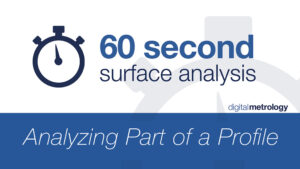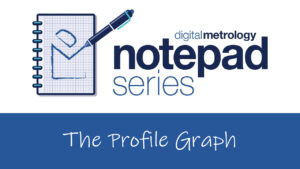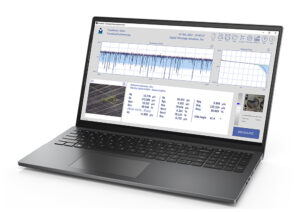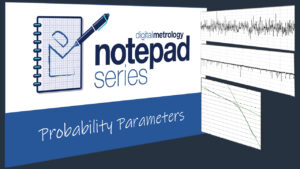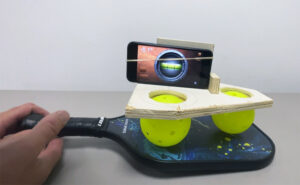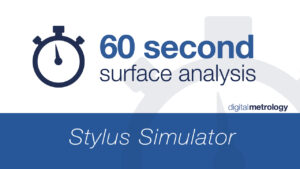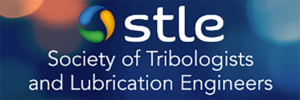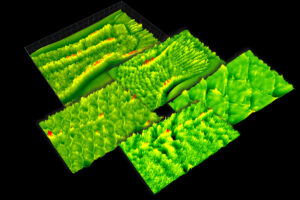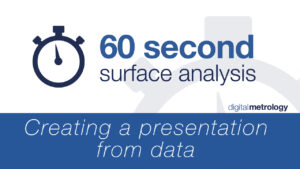60-Second Surface Analysis Video – Analyzing Part of a Profile
Surface roughness measurements frequently include more data than we want to analyze. The extra areas may include steps, noise, or irrelevant features that will skew any parameters that we calculate. To get to the data we want, we need to focus on just part of the profile. OmniSurf software (Digital Metrology) includes several tools for selecting a region for analysis, and for calculating the parameters over just this region of interest. We'll show how to use those tools in this 60-Second Surface Analysis video.
Read MoreNotepad Series Video: The Profile Graph
Trying to understand surface texture using just a parameter or two is like trying to drive at night using only your speedometer and a compass. Those tools can tell you which direction you're headed, and how fast...but they can't help you to correct. In this video we describe the profile graph and dive into what it can tell us about our surfaces and processes. Rather than "dead reckoning" using parameters, the profile graph helps relate the shape of your surface to what's happening in your process.
Read MoreIntroducing TraceBoss+
Last year Digital Metrology's TraceBoss software changed how you see, save, and understand data from your surface roughness gage. Now, TraceBoss+ brings you even more, combining the surface roughness analysis of TraceBoss with the crosshatch analysis of our HatchView software... and introducing new tools to measure, save, store, export, and print all of these results together. So much more than a sum of its parts!
Read MoreNotepad Series Video: The Probability Parameters
In this Notepad Series video we look at a way of describing worn or plateaued surfaces. The Rq (or "Q") family of surface texture parameters, also known as the “probability parameters,” describes worn or plateaued surfaces that consist of two distinct distributions of heights. They are powerful tools for describing the peak and valley regions, and the intersection point where plateaus meet valleys.
Read MorePickleball paddles: does “rougher” equal “more friction?”
How much does the surface texture of a pickleball paddle affect the friction when it contacts the ball? The answer is: a lot, but maybe not how you would expect! In this new Surface Notes blog post we compare the surfaces of two paddles to see whether the surface roughness really correlates with friction. You can try it for yourself as well—the datasets are now available in our Surface Library.
Read MoreVideo: Stylus Simulation Tool
Does a stylus see the same details as an optical system? The Stylus Simulation tool in OmniSurf3D surface analysis software predicts what a stylus will see as it moves over a surface texture. In this video we demonstrate how the tool works and how it helps bridge the gap between optical and stylus measurement technologies.
Read MoreMark Malburg presenting at STLE
Digital Metrology's Mark Malburg will be presenting this week at the STLE Annual Meeting and Exhibition in Long Beach, California.
Making Surface Texture Meaningful: Case Studies in Surface Analysis for Tribological Applications
Thursday, May 25, 9:00 am
Long Beach Convention Center, SESSION 7K Surface Engineering III, Room 201B
For more details view the STLE meeting program guide.
Read MoreNotepad Series Video: The Gaussian Filter
When you're driving, your tires, shock absorbers, and suspension remove most of the harsh vibrations from the road, leaving you with a smooth ride. In surface texture analysis, filtering has much the same effect: separating larger "waviness" from finer "roughness." The Gaussian filter acts like the perfect shock absorber in terms of separating waviness and roughness...but it does have nuances. In this video we show how the Gaussian filter works, and we share some details you need to understand in order to decide when and how to use it.
Read MoreSurface Library Datasets – Fish Scales
A few months ago we shared some of the research of Dr. Jessica Arbour, who studies fish morphologies to understand how various species evolve. This month we are pleased to share the work of Dr. Dylan Wainwright, who Dr. Arbour cites as an inspiration. Dr. Wainwright pioneered the use of the GelSight tactile sensing gauge for studying animal morphologies, such as the size, shape, and surface features of fish scales. We've added five of Dr. Wainwright's GelSight datasets to the Surface Library so that you can explore them as well.
Read MoreCreating a Presentation from Data
In this 60-Second Surface Analysis video we show how to load data from OmniSurf3D into a PowerPoint presentation in just a few clicks. It's an incredible time-saver, especially when you have a large amount of data to share.
Read More
